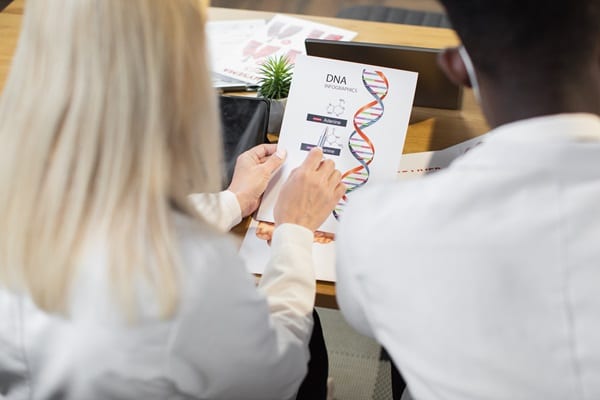Strokes are a major health concern for seniors, impacting millions worldwide every year. As one of the leading causes of disability and death among the elderly, understanding the causes of strokes is crucial. This post explores the various factors that contribute to the increased risk of stroke in seniors, emphasizing that the causes are numerous and complex. From physiological changes associated with aging to lifestyle and environmental factors, the information provided aims to educate and inform readers on how to better manage these risks.
Contents
Understanding Strokes

A stroke occurs when the blood supply to part of the brain is interrupted or reduced, preventing brain tissue from getting oxygen and nutrients. Brain cells begin to die in minutes. There are two main types of stroke: ischemic, due to lack of blood flow, and hemorrhagic, caused by bleeding. Understanding these types helps clarify why prevention and immediate treatment are crucial. This basic knowledge is fundamental in recognizing the risks and symptoms associated with each type.
Ischemic strokes are the most common, making up about 87% of all strokes. They occur when a blood clot blocks or narrows an artery leading to the brain. Hemorrhagic strokes, on the other hand, are caused by a burst or leaking blood vessel in the brain. Each type of stroke has different causes and risk factors associated with it, which are influenced by a variety of internal and external factors that will be explored below.
Age-Related Risk Factors

As you age, your body undergoes various changes that increase the likelihood of having a stroke. For seniors, the risk escalates due to the stiffening of blood vessels and arteries, making them more susceptible to blockage or rupture. Additionally, the natural aging process can lead to the decline of the brain’s protective mechanisms, further elevating the risk of stroke.
Statistics indicate that the probability of having a stroke doubles every decade after the age of 55. This is not merely due to aging itself but also the accumulation of other risk factors that often worsen with age. These include increased blood pressure, the buildup of arterial plaque, and the higher incidence of cardiac conditions like atrial fibrillation, which are more common in older adults.
Medical Conditions That Increase Risk

Several medical conditions significantly elevate the risk of stroke among seniors. High blood pressure, or hypertension, is the leading cause of stroke. It contributes to both types of strokes by damaging the arteries, making them more likely to block or burst. Atrial fibrillation, an irregular heart rhythm, can lead to the formation of clots in the heart, which can then travel to the brain, causing an ischemic stroke.
Diabetes is another critical factor; it exacerbates the risk by causing chronic inflammation and damage to blood vessels, making them more prone to blockage. The combination of diabetes and other conditions like high cholesterol or obesity compounds the likelihood of a stroke. Managing these conditions with medication and lifestyle changes is essential in reducing stroke risk.
Lifestyle Factors

Lifestyle choices play a significant role in increasing or decreasing the risk of stroke. Smoking, for instance, doubles the chance of a stroke by narrowing blood vessels and causing a buildup of fatty substances in the main arteries. Additionally, diets high in salt, fat, and calories contribute to the development of high blood pressure and arterial blockages, both of which are significant risk factors for strokes.
Conversely, regular physical activity and a healthy diet rich in fruits, vegetables, and whole grains can significantly reduce the risk. Exercise helps to lower blood pressure, improve blood circulation, and enhance overall cardiovascular health. Making these lifestyle adjustments not only lowers the risk of stroke but also improves general well-being and longevity.
The Role of Medication

Certain medications can inadvertently increase the risk of stroke, particularly in seniors. For example, anticoagulants, which are used to prevent blood clots, can sometimes lead to hemorrhagic strokes if they cause excessive bleeding. It’s crucial for individuals taking these medications to have regular medical supervision to manage these risks effectively. Similarly, corticosteroids and some cancer medications can elevate blood pressure, thus increasing stroke risk.
On the other hand, there are medications that significantly reduce the risk of stroke. Blood pressure medications, antiplatelet drugs, and statins are used to manage blood pressure, prevent clot formation, and reduce cholesterol levels, respectively. These medications are vital in the prevention strategy for strokes, particularly for those with existing risk factors such as hypertension or high cholesterol. Regular consultations with healthcare providers ensure that these medications are used effectively and adjusted as necessary.
Genetic and Family History

Genetics play a substantial role in an individual’s risk of having a stroke. Those with a family history of stroke may have an inherited predisposition for conditions that contribute to stroke, such as hypertension or diabetes. Understanding one’s genetic risk can help in taking early preventive measures. Recent research has identified several genes associated with stroke risk, and genetic testing is becoming a tool for assessing personal risk levels.
However, having a genetic predisposition doesn’t guarantee that a stroke will occur; it simply raises the risk. This is why it’s important for individuals with a family history of stroke to be vigilant about monitoring their health, managing other risk factors, and maintaining a healthy lifestyle. Preventive measures, including regular health check-ups, can help mitigate the increased risk posed by genetic factors.
Environmental and Social Factors

Environmental factors such as pollution and exposure to secondhand smoke can also affect stroke risk. Studies have shown that fine particulate air pollution is linked with an increased risk of stroke, likely due to its effects on blood pressure and cardiovascular health. Seniors living in highly polluted areas need to be particularly cautious and consider air quality as a part of their overall health strategy.
Social determinants of health, including socioeconomic status, access to healthcare, and education, significantly influence stroke risk and outcomes. People in lower socioeconomic groups often have higher rates of stroke, possibly due to limited access to healthcare and healthy food options, as well as higher levels of stress. Addressing these social factors is crucial for reducing disparities in stroke incidence and improving overall community health.
Warning Signs and Symptoms of Stroke

Recognizing the warning signs and symptoms of a stroke can be life-saving, as immediate treatment is critical for the best possible outcome. Symptoms often appear suddenly and can include numbness or weakness in the face, arm, or leg, especially on one side of the body; confusion, trouble speaking, or difficulty understanding speech; trouble seeing in one or both eyes; difficulty walking, dizziness, loss of balance, or lack of coordination; and a severe headache with no known cause.
The acronym F.A.S.T. (Face drooping, Arm weakness, Speech difficulties, Time to call emergency services) helps the public remember the urgent signs of a stroke. Educating seniors and their caregivers about these symptoms and the importance of acting quickly can dramatically improve the effectiveness of treatment and the likelihood of recovery. Awareness campaigns and community education are vital in increasing this knowledge and preparedness.
The Bottom Line
Understanding the multifaceted causes of strokes in seniors is key to prevention and effective management. By addressing medical, lifestyle, genetic, and environmental factors, individuals can significantly reduce their risk. Proactive health monitoring, combined with informed lifestyle choices, plays a crucial role in safeguarding against this life-threatening condition. Let’s prioritize regular health check-ups and embrace preventive measures to ensure a healthier future for the elderly population.


